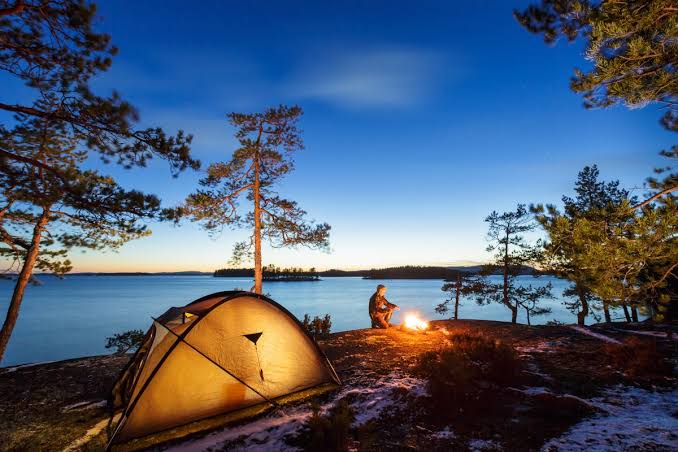Despite what people may think, choosing a place to pitch your tent is more challenging than it seems. You could always find a flat area, but the site might be in a flat spot prone to flooding in case it rains a lot. Here are some factors you need to consider to find the perfect location you can comfortably eat and safely sleep outdoors.
1. Safety
Find an area far from trees with limbs or dead trees that might fall in a storm. Do not camp near high ridges, mountain tops, lone trees, or other possible lightning targets. Also, avoid low-lying spots that could flood quickly, for instance, canyons, valleys and banks of small rivers. To spot this, you will see grass bent over in the same direction or debris caught in the underbrush. The raised ground is dangerous if you spot any signs of soil erosion.
2. Privacy
Always respect other people’s privacy by picking campsites away from them. Bushes, trees and terrain can shield your camp from neighbouring campsites and foot trails. Avoid loud noise to avoid disturbing other campers, and tranquil hours at scout camps and public campgrounds.
3. Comfort
You cannot stay in an area where you feel uncomfortable. During the summer, search for a site with shade where breezes will help cool off the tent and keep mosquitoes away. Pick a spot where hillsides and trees provide a natural windbreak in the winter. Place your tent in the flattest area possible, regardless of the time of the year.
4. Environmental Impact
Go to established campsites whenever possible, that is, campsites with their camping gear. If you are carrying your camping equipment, ensure they do not damage surfaces. Return objects that you might have moved to their original spots before you leave the site, for instance, rocks and logs.
5. Water Availability
You will need a lot of cooking, cleaning and drinking water while camping. The safest source is public water supplies and is available in most campsites. If you get water from lakes, rivers or streams, ensure it is correctly treated before consumption. However, you might be required to carry your water to camp in some dry areas.
6. Size
Ensure adequate space to move around without tripping over guylines and tent stakes. Your area should be large enough for your team to set up their tents and cook meals in different spots.
7. Permission
You must confirm with public parks, reserves and forests whether the area allows camping. They might have to issue you with any permits that will be required. Do not camp on private property without permission from the proper authority.
8. Fire
You will need the energy to heat water and cook food. Plan on sourcing a portable stove in some sites where fires may not be allowed, or wood might be scarce. Where fires are permitted, look for a campsite with an existing fire ring and collect dead and down firewood. Do not cut down trees.
9. Site Terrain
Ensure the spot you pick has good drainage, enough sunlight for visibility and natural ground cover. This will make your camping experience much easier and more enjoyable.
